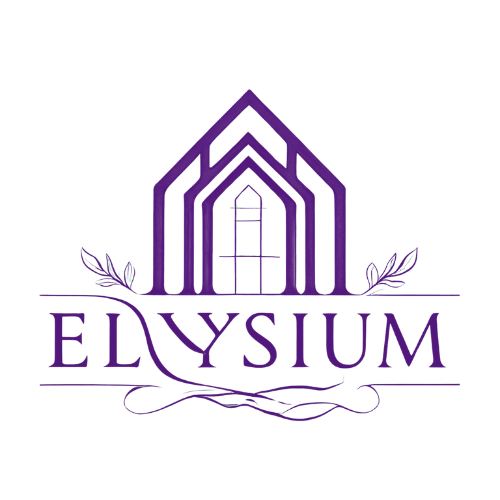Commercial Bank Loans
At Estates of Elysium, we help real estate investors access conventional commercial bank loans designed for long-term success. These loans are ideal for purchasing or refinancing stabilized commercial properties and can serve as primary financing for both new and seasoned investors.
About Commercial Bank Loans
Traditional Financing Backed by Trusted Institutions
Commercial bank loans are a cornerstone of real estate financing—offering predictable terms, competitive rates, and flexible structures for stabilized commercial properties. At Estates of Elysium, we connect investors with trusted banks and credit unions to secure funding that fits their investment goals.
What Are Commercial Bank Loans?
These are loans issued by traditional financial institutions such as:
National and regional banks
Credit unions
Savings institutions
They are typically used for purchasing or refinancing income-producing commercial properties and are considered first-lien loans—meaning the bank holds the primary claim on the asset.
Why Investors Use Them
Commercial bank loans are known for their stability and borrower-friendly terms, making them ideal for:
Experienced investors expanding their portfolios
First-time commercial buyers with strong financials
Investors seeking long-term fixed-rate options
Properties with consistent cash flow and low risk
Rates & Terms
Flexible Lending Structures for Qualified Borrowers:
At Estates of Elysium, we work with trusted banks and credit unions to help investors access financing options that balance affordability, flexibility, and long-term security. Below is a breakdown of what you can expect from a conventional commercial bank loan in today’s market.
Interest Rates
Commercial bank interest rates vary by asset class, borrower profile, and market conditions.
Starting Rates: As low as 5.24% for stabilized multifamily assets in prime markets
Typical Range: 5.6% – 10.5%, depending on property type, risk, and financials
Asset-Class Benchmarks:
Multifamily: 5.45% – 7.00%
Industrial: 5.5% – 7.5%
Office/Retail: 6.0% – 12.0%
Rate Formula:
Interest Rate = Index (SOFR or Treasury) + Lender Spread (150–350 bps)
(Current SOFR avg: ~5.33%, Treasury yield: ~4.2%)
Loan Term & Amortization
Loan Terms: 3 to 15 years (commonly 5, 7, or 10-year structures)
Amortization Periods: 10 to 30 years (25–30 years standard for income properties)
Fixed & Floating Options: Available, depending on your risk tolerance and investment horizon
Loan-to-Value & Cash Flow Standards
Banks evaluate deals conservatively to ensure long-term stability:
Maximum LTV: Up to 80%
Minimum DSCR: 1.20× to 1.25× (based on in-place NOI)
Minimum Debt Yield: 7% to 8% (varies by lender and asset)
Recourse & Prepayment Flexibility
Recourse Options:
Full Recourse: Personal guarantee required
Limited Recourse: Carve-outs or “bad boy” clauses
Non-Recourse: Based solely on the asset (available to qualified borrowers)
Prepayment Options:
No Prepay Penalty (in select cases)
Step-Down Penalties (e.g., 5-4-3-2-1)
Flat-Fee Buyouts
Why Estates of Elysium?
We combine deep market knowledge with innovative tech to offer funding that meets your timeline, your deal size, and your investment goals.
Trusted Lending Partners
Estates of Elysium collaborates with reputable banks and credit unions to match each investor with the right financing solution.
Deal Management Support
From application to funding, our team helps manage each step of the process so you stay focused on your investment strategy.
Underwriting Focus
We work with lenders who prioritize strong cash flow, stable assets, and clear financial documentation for efficient approvals.
Tight Closing Timelines
Most commercial bank loans close in 30–60 days, depending on borrower readiness, third-party reports, and loan complexity.
What Lenders Look For:
To qualify for the most competitive terms, banks typically prioritize:
Strong and stable rental income
High occupancy rates
Solid borrower liquidity and net worth
Good credit and repayment history
Location and asset class stability
Defined business plan or exit strategy
Why Choose a Bank Loan?
Lower Interest Rates: Often more affordable than private or hard money options
Predictable Terms: Great for buy-and-hold and stabilized investments
Flexible Structuring: Tailored amortization, recourse, and prepay terms
Institutional Credibility: Adds legitimacy to your financing stack when syndicating or raising capital.
Frequently Asked Questions
Answers to Your Commercial Bank Loan Questions
Q. What types of properties can I finance with a commercial bank loan?
A. You can finance stabilized income-producing assets such as multifamily (5+ units), office, retail, warehouse/industrial, self-storage, hospitality (in select markets), and medical buildings.
Q. What credit score do I need to qualify?
A. Most lenders look for a credit score of 680 or higher, though lower scores may be considered with strong financials or additional collateral.
Q. Can I get a commercial bank loan if I’m a first-time investor?
A. Yes. While experience helps, first-time investors with strong personal financials, good credit, and a solid business plan can qualify.
Q. Are commercial bank loans always full recourse?
A. No. Depending on the deal and your profile, you may qualify for non-recourse or limited-recourse terms.
Q. What’s the typical down payment required?
A. Most lenders require 20% to 30% down, depending on the LTV, risk profile, and asset type.
Q. How long does it take to close a commercial bank loan?
A. The average timeline is 30–60 days, depending on how quickly you provide documentation and the complexity of the deal.
Q. Can I refinance an existing commercial loan through a bank?
A. Absolutely. You can refinance to secure a better rate, pull out equity, or restructure terms. Banks often offer favorable refinancing for stabilized assets.
Resources
-

Why Industrial Real Estate Still Outperforms in a High-Rate Market
Despite elevated interest rates, demand for industrial space remains strong due to sustained e-commerce growth and supply chain restructuring. Investors are prioritizing logistics and last-mile distribution centers, where rental rates continue to climb.
-

Multifamily Resilience: What Class A vs. Class B Trends Tell Us in 2025
Rising borrowing costs have pushed more renters into Class B and value-add multifamily units, while luxury developments face higher vacancy risks. Smart investors are targeting stabilized workforce housing in high-demand metros for long-term upside.
-

Office Space Is Evolving, Not Dying—Here's Where the Opportunities Are
Hybrid work models and flexible layouts are redefining demand, especially in suburban Class B/C conversions and medical office buildings. While traditional core office struggles, niche opportunities are emerging in specialized and adaptive reuse plays.
-

Hospitality is Back: How Hotels Are Bouncing Back in Lifestyle and Extended Stay
Travel demand has returned, but investor interest is shifting toward extended stay and boutique/lifestyle hotels with higher margins and longer bookings. Creative capital stacks and repositioning strategies are helping operators thrive even amid rising cap rates.
Reviews
⭐️⭐️⭐️⭐️⭐️










